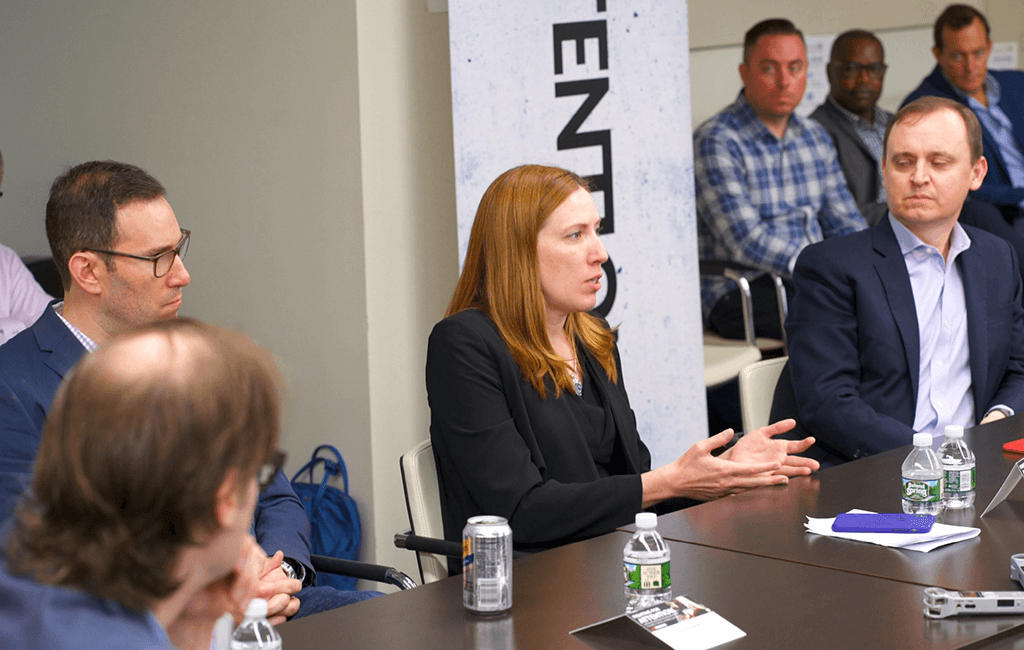No one values advertising the way it should. We need to reset and rethink metrics to help industry move forward.
– Joshua Lowcock, EVP, Chief Digital & Innovation Officer | UM Worldwide
The fight for customer attention has been deceptively complex, especially across the programmatic ecosystem. Even as buyers and sellers work to clear the bar for today’s viewability standards, they’re actively planning to move beyond them. But how can the digital advertising industry better transact on attention when definitions of quality attention are so divergent?
We rounded up a group of key stakeholders from companies like Universal McCann, Amnet, Pandora and Morgan Stanley for a candid conversation led by Admonsters Editorial Director Gavin Dunaway.

The key takeaway?
That winning the war on poor experiences for both brands and consumers requires the creation of new solutions that acknowledge the value provided by all of the industry’s players. Find a few key talking points from our speakers below:
Viewability: Good, But Still Working Out the Kinks
“[Adopting] viewability standards has made things better, but we’re still dealing with an inconsistent application of [how to adhere] to those standards depending on the client, publisher or platform.” —Joshua Lowcock, EVP, Chief Digital & Innovation Officer | UM Worldwide
“[The challenge is that] everyone has their own transaction standards for quality when it comes to buying or selling, and that’s inclusive of viewability. It’s tough with direct sales, but even worse with programmatic.” —Jessica Kadden, Senior Director, Programmatic and Data Solutions | Meredith
Advertisers & Agencies Share Some Responsibility
“On the agency side, we scrambled to accommodate clients [with viewability], but there weren’t any real internal processes in place to handle things like reconciliation. We needed to do a better job of educating our clients about how adopting these standards would impact the way we all do business.” —Angelina Eng, Executive Director, Marketing | Morgan Stanley
“I can get someone to a page, make sure the ad is seen, and possibly get them to interact with it [depending on the KPIs], but I can’t control what happens after that. So if an advertiser sends an ad that takes too long to load, and the user moves on before meeting the viewability standard, who is responsible for that? How do we make sure those kinds of issues [that impact viewability] don’t reflect badly on the publisher?” —Jana Meron, SVP, Programmatic & Data Strategy | Insider Inc.

What Transacting Based on Attention Might Look Like
“We need to move from reactive to proactive attention tracking, and a baseline for what ‘attention’ equates to. So instead of [advertisers] having to claw back spend after finding out that a campaign didn’t meet their standards, they’d be able to benchmark against factors like ad size, number of ads on the page, time-in-view and more, and optimize [for viewability] from there.” —Eric Wheeler, CEO | 33Across
Environment Matters
“Measuring attention requires understanding the ad’s environment and weighting that accordingly. There’s no concern about ad clutter in-app or on OTT, so does an ad on one of those platforms rank differently in terms of attention than display on the desktop? We have to remember how user behavior is shifting [based on the environment] and make sure any new metrics reflect that.” —Maria Breza, Sr. Director, Platform Operations | Pandora
Improving Attribution
“We’re finding that clients are moving toward measuring long-term business outcomes vs. short-term metrics like clicks. Sure, a campaign with a 3% CTR would be great, but did those clicks actually lead to purchases? With the right CRM data, we’re [backing into] ways to measure attention that can counter things like cookie bombing that would otherwise skew the results.” —Jason Barneett, VP, Client Results | Amnet Group
“The goal is to optimize to business outcomes, but advertisers and agencies also want media metrics or media-related KPIs they’re accustomed to. Sales take longer to track, knowing whether someone clicked from an ad on site to a landing page will still serve as a proxy for attention [in some cases].” —Ethan Ross, SVP, Global Digital Sales | theScore

And Finally … Let’s Stop Blaming the Mythical “Junior Media Person” for Poor Performance
Attend a digital ad or programmatic conference and you’re more likely than not to hear a “junior media buyer” or “entry-level planner” cited as the source for ad fraud, sites that shouldn’t be on the media plan, or other examples of poor performance — and a lack of attention.
Our roundtable participants agreed that it was time for the industry to move beyond this cliche, and UM’s Joshua Lowcock summed it up quite nicely:
“Let’s stop blaming this junior media person [for issues around viewability]. There are cost-structures and KPIs that have been put in place on the agency side, and sometimes by the client that lead to these kinds of buys. We might as well blame procurement in the same breath.”








